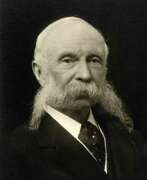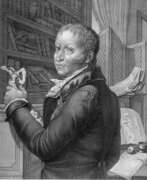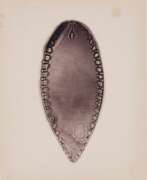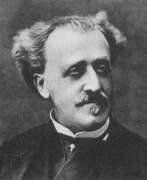Doctors 19th century


Robert Baikie was a Scottish-born physician, writer and artist.
Baikie spent more than 17 years as a doctor in India with the East India Company's Madras Army, as Chief Medical Officer of the Nilgiris, and has written extensively about the region. It is a fascinating account of the Nilgiri Mountains with maps of the hills and approaches to them, sketches of the scenery, drawings of the principal buildings and tables of routes. This work by Robert Baikie was later published as Observations on the Nilgiri, including an account of their topography, climate, soil and produce.


Jan Bleuland was a Dutch physician, medical scientist, educator and writer.
Bleuland was an intellectually advanced man, a sought-after physician, and a rich lover of the arts. Jan Bleuland taught anatomy, physiology and obstetrics for 31 years and was professor and rector of Utrecht University. His talents as a physician and medical researcher were recognized not only by his patients and the scientific community, but also by the highest authorities.
During his lifetime, Jan Bleuland amassed a large collection of medical specimens of the human body, which he used for research. Part of this significant collection is still on display in the original wooden Bleulandkabinet in the Utrecht University Museum. The Bleulandkabinet contains an extensive collection of skeletons, embryos in alcohol and wax preparations of body parts. His pioneering preparations were acquired by Utrecht University by royal decree of King Willem I in 1815 and are still used as teaching material.


Aimé Bonpland, born Aimé Jacques Alexandre Goujaud, was a French and Argentine natural scientist, traveler, physician, and botanist.
Bonpland became famous for his participation in an expedition to the Americas. Together with the explorer Alexander von Humboldt, he traveled through much of the American territory, from Cuman to the United States, passing through Colombia, Ecuador, Peru, Mexico, and Cuba, in addition to Venezuela. In all these places he did a great deal of botanical work, describing and collecting six thousand species of American plants, many of which were new. The scientist made them known in Europe after his return in 1804, publishing several scientific papers. Four years later, Bonpland was appointed botanist of the Empress's Garden.
After more years, he returned to Buenos Aires and continued numerous botanical, zoological, and medical studies in various regions of South America. Bonpland sent plants to the Museum of Natural History in Paris and maintained correspondence with its naturalists.


Désiré-Magloire Bourneville was a French physician, neurologist, innovator and educator, and statesman.
Born into a modest family, Bourneville began his medical education in 1860 and for about ten years worked as an assistant to Jean-Martin Charcot, where, together with Paul Régnard, he supervised the publication of "Photographic Iconography of Salpetriere". During the Franco-Prussian War, he served as both surgeon and physician's assistant. Appointed physician at Bissetre, Borneville devoted himself to the medical and educational care of "idiots and epileptics" for whom he organized a service, and later directed the Fondation Vallée in Gentilly until his death. He is considered one of the earliest child psychiatrists.
In 1876, Bourneville was elected a municipal councilor of Paris, three years later he became a general councilor of the Seine, and then a deputy. In this capacity, Bourneville carried out several health reforms: he became the rapporteur for the public assistance budget and the budget for psychiatric asylums, achieved the creation of the first special classes for mentally retarded children, and the first municipal nursing school in Salpêtrière.
Bourneville had many very different talents. Very early on he became interested in medical journalism, where he made a name for himself through the vividness of his articles. In 1873, he founded the journal Progrès Médical, which promoted the tenets of avant-garde medicine, open to pioneering scientific developments (Bourneville published Charcot's lessons) and social issues. He fully developed the theoretical and practical foundations of teaching for the nursing profession. Outraged by the lack of practitioners' professional knowledge of obstetrics, he worked to create a new medical specialty, gynecology. But his main purpose in life was to educate and nurture those who were labeled "idiots" and mentally retarded.


Selina Bracebridge, née Mills, was a British artist, medical reformer, writer and traveler.
Selina studied art with the painter Samuel Prout and traveled extensively, married Charles Holt Bracebridge, and lived in Athens. During the Crimean War, she and her husband worked in the hospital with Florence Nightingale, the founder of modern nursing.
Among Selina Bracebridge's paintings are a famous panorama of Jerusalem taken from the roof of the Governor's Palace, landscapes of Athens and others.


Solyman Brown was an American dentist, creator of the first U.S. National Dental Society and the first U.S. Dental Journal, as well as a poet and artist.
Brown received his bachelor's, master's, and doctor of medicine degrees from Yale University, and also worked as a minister. He wrote many articles explaining dental principles and regulations and became one of the editors of the American Journal and Library of Dental Sciences.
Essentially, in the 19th century, American dentistry was in a terrible state. And Solyman Brown, through all his activism, contributed to the enlightenment and establishment of dentistry in the United States as a true profession and science.
Brown also wrote poetry, articles and essays, and was constantly published in the periodical press. He gained fame and notoriety as a dental poet with his epic "Dentology, a poem on the diseases of the teeth and their proper remedies," which he wrote in 1833. And many more of his poems were devoted to dental diseases, their prevention and treatment. Soliyman Brown, in addition, was a painter and sculptor, painting portraits and creating furniture in wood.


Carl Gustav Carus was a German painter of the first half of the 19th century. He is known as a landscape painter, as well as a scientist, physician (gynecologist, anatomist, pathologist, psychologist) and a major theorist of Romanticism in art.
Carus created idyllic landscapes depicting moonlit nights, mountains, forests, Gothic architecture and ruins. In his work, according to critics, he combined a romantic view of nature with the classical ideal of beauty, understood the beautiful as a triad of God, nature and man. Noteworthy are his small-format, spontaneously created landscape sketches with images of clouds. The master is the author of "Nine Letters on Landscape Painting" - one of the main theoretical works that laid the foundations of the German Romantic school of painting.


Thomas Holley Chivers was an American physician and poet of the first half of the 19th century.
Chivers earned a medical degree from Transylvania University in Lexington, Kentucky, but rarely practiced medicine. After receiving an inheritance, he was able to live freely and travel. In the early 1830s he traveled extensively throughout the western frontier and the North. He became fascinated with Transcendentalist philosophy as well as slave poetry. A number of Cheevers's poems and plays reflected his ideological views on American Indians and their plight, inspired in part by his interactions with the Cherokee during his frontier wanderings.
During his lifetime, Chivers published eleven volumes of poems, plays, and pamphlets. He also collaborated with the leading literary periodicals and newspapers of the antebellum era, notably the Georgia Citizen, and wrote a biography of Edgar Allan Poe, his friend and soulmate. Nevertheless, the eccentric writer never achieved the critical acclaim he craved all his life.
The friendship between Chivers and Edgar Allan Poe was based on a mutual fascination with metaphysical speculation, as well as on shared literary interests. However, the close cooperation of the two poets was accompanied by a sharp rivalry, in addition, each of them began to consider the artistic borrowings of the other plagiarized. By and large, Chivers is known only for his association with Edgar Poe.


Sir James Crichton-Browne was a British and Scottish psychiatrist, neurologist, and MD.
James studied medicine at the University of Edinburgh, where his interest in psychiatry soon developed. After receiving his MD degree, he worked in hospitals in Derby, Devon and Newcastle. At the age of 26 he was appointed medical superintendent of the Lunatic Asylum in Wakefield and within nine years had transformed the hospital into a leading center for research and treatment.
Crichton-Browne initiated a scientific approach to the brain and its diseases. In 1871 he started the West Riding Asylum Medical Reports, which were published annually for six years. He was a pioneer in combating the common belief at the time that mental asylums could not produce original research and useful science. The persuasive scientist attracted many talented young people to collaborate in his research. Among them were David Ferrier (1843-1928) and Hughlings Jackson, who worked on cerebral localization and epilepsy. In 1878 they together founded what became the famous neurological journal Brain, the first journal devoted to what is now called neurobiology.
Crichton-Browne corresponded extensively with Charles Darwin, providing him with drawings and photographs for his book The Expression of Emotion in Man and Animals. Darwin valued his co-author so much that in 1883 he proposed that he be elected a Fellow of the Royal Society.
Crichton-Browne was also active in the development of public health policy regarding mental health. He worked prolifically into old age, writing monographs and autobiographical material, but in recent years he became involved in the controversial science of eugenics.


Alphonse Dubois, full name Alphonse Joseph Charles Dubois, was a Belgian naturalist and physician.
Alphonse Dubois had a doctorate in medicine and in 1869 became curator of vertebrate animals at the Royal Museum of Natural History in Brussels. He worked with his father, the academician Charles-Frédéric Dubois (1804-1867), on the publication Les Oiseaux de l'Europe et leurs œufs (The Birds of Europe and their Eggs), completing it after his father's death. The book consisted of two volumes, the second of which consisted of illustrations by Dubois Sr.


John Dunlop was a British physician and artist.
As Assistant Surgeon of His Majesty's 32nd Regiment, John Dunlop participated in and witnessed the Siege of Multan, Pakistan, a five-month standoff between the city and state of Multan and British East India Company troops in 1848. He made numerous sketches from the scene. Based on his drawings, a work entitled Multan during and after the siege was published. It included 21 drawings by John Dunlop, lithographed by Andrew Maclure, with a descriptive and historical account of the siege.
The siege lasted from April 19, 1848, when a rebellion in the city against a ruler imposed by the East India Company led to the outbreak of the Second Anglo-Sikh War, until January 22, 1849, when the last defenders surrendered.


igmund Freud, born Sigismund Schlomo Freud, was an Austrian psychologist, psychiatrist and neurologist, the founder of psychoanalysis.
He graduated from the medical faculty of the University of Vienna, was engaged in self-education and numerous, cutting-edge for his time studies of the human psyche. The resulting psychoanalysis he created was both a theory of the human psyche, a therapy to alleviate its ills, and a tool for interpreting culture and society. Freud's psychoanalysis had a significant impact on psychology, medicine, sociology, anthropology, literature and art in the twentieth century.
Despite the sometimes harsh criticism of virtually all of his ideas and teachings, which continues almost a century after his death, Freud remains one of the most influential intellectual figures of our time.


Oliver Wendell Holmes Sr. was an American physician, poet, and humor writer.
Holmes studied law at Harvard University, then medicine in Paris. He practiced medicine for 10 years, taught anatomy at Dartmouth College (Hanover, North Carolina) for two years, and became professor of anatomy and physiology at Harvard in 1847. He later became dean of Harvard Medical School and held that position until 1882. Holmes' most significant contribution to medicine was his research on the contagiousness of postpartum fever. In 1843, he published a treatise on the subject, The Infectiousness of Postpartum Fever. He also introduced the term anesthesia into scientific usage.
Today, Oliver Holmes is remembered as a gifted writer of the 19th century in the United States. Beginning in 1857, he published his "Breakfast at the Table" articles-essays in The Atlantic Monthly and later published several collections written in a conversational style, with Holmes's characteristic humor and wit. He also wrote several poems, three novels, and many poems and anecdotes.
Oliver Wendell Holmes was the father of lawyer Oliver Wendell Holmes, Jr. (1841-1935). According to some sources, he was the prototype of the detective Sherlock Holmes, the famous hero of writer Arthur Conan Doyle.


Paolo Mascagni was an Italian physician and anatomist.
He graduated from the University of Siena in philosophy and medicine, becoming a professor of anatomy there and focusing on the human lymphatic system. Mascagni outlined his discoveries in a book with detailed illustrations of each part of the lymphatic system he identified. In studying the lymphatic system, Mascagni refined the technique: he injected mercury as a contrast agent into the peripheral lymphatic networks of a human cadaver and, by tracing the movement of mercury into other parts of the system, was able to create detailed diagrams and models. By studying physiology and pathology, he was able to emphasize the importance of the lymphatic system in combating diseases of the human body, which helped to develop new treatments.
Mascagni helped to enrich the collection of wax anatomical figures in the Florence Museum, and commissioned the sculptor Clemente Susini to make a full-scale model of the lymphatic system in wax, which can still be seen in the Museum of Human Anatomy at the University of Bologna. Mascagni created the Anatomia universale ("General Anatomy"), a huge unbound book of 44 copper sheets with anatomical illustrations. The scientist pursued the task of collecting in one book the entire body of knowledge about the anatomy of the human body. Each plate is made in such a way that drawings relating to one plane of dissection can be placed together and show the whole body in life-size.
In addition to anatomy and medicine, Mascagni was interested in mineralogy, botany, chemistry, and agriculture.


Johann Friedrich Meckel the Younger was a German anatomist, biologist and professor of anatomy.
Meckel came from a family of physicians; his grandfather and father were physicians and anatomists and had their own anatomical museum at home. Meckel studied medicine at the universities of Halle and Göttingen, writing his doctoral dissertation on congenital anomalies of the heart. As a pathologist, he specialized in the study of congenital malformations and aspects of lung and blood vessel development. He also described Meckel's diverticulum, which he discovered during a pathologic examination, and became the founder of the science of teratology.
After Napoleon's occupation, the University of Halle reopened in May 1808, and Meckel was appointed professor of surgery, normal and pathological anatomy, and obstetrics. He taught throughout his life, continued to conduct research in pathology, and collected specimens for his collection. The scientist was the author of numerous articles and several multi-volume treatises, including one on pathologic anatomy and an atlas depicting human anomalies. His principal labors were devoted to the comparative morphology of vertebrates. In 1810 he completed the translation of Cuvier's (1769-1832) five-volume Leçons d'anatomie Comparée from French into German.
Meckel was a member of the German Academy of Naturalists "Leopoldina," a corresponding member of the Paris Academy of Sciences, and a foreign member of the Royal Society of London.


John Thomas Redmayne was a British surgeon, physician and amateur naturalist.
Redmayne trained as a physician and surgeon in Glasgow, then received his diploma at Guy's Hospital in London and was licensed by the Royal College of Physicians in Edinburgh.
In addition to being a physician, J. Redmayne was an amateur naturalist, he became interested in microscopy and specialized in diatom algae. He is considered one of the most successful microphotographers of the time, and his founding of the Bolton Microscopical Society allowed him to concentrate on the study of diatoms. His microscopic diatom plates were highly respected, particularly for the relative purity of the species. He also mounted histological preparations. Redmayne gave copies of his book to the Quekett Microscopical Club (which he joined in 1876) and the Royal Microscopical Society.


Paul Regnard, full name Paul Marie Léon Regnard, was a French physician, physiologist and photographer, and teacher.
He became a trainee at the hospital in 1874 and received his MD degree in 1878. Paul Regnard was deputy director of the Hautes Etudes Laboratories, and from 1878 taught general physiology at the newly founded National Agronomic Institute and later became its director (1902). He was also from 1895 a member of the Academy of Medicine in the section of biological sciences.
Regnard was one of the first practitioners of medical photography, particularly photographs of the mentally ill. Together with Désiré-Magloire Borneville, he directed the photographic service at the Salpêtrière Hospital of Paris, established by the psychiatrist J.C. Charcot (1825-1893). Numerous photographs were published in the book Iconographie Photographyique de la Salpêtrière. Regnard was a tireless researcher. He was one of the first naturalists to study the effects of atmospheric pressure on microbial metabolism. The scientist made a detailed historical and bibliographical survey of descriptions of possession and witchcraft through the ages, focusing on well-documented cases.
Regnar was particularly interested in the physical manifestations described by contemporaries: fainting spells, tetany, paresthesias, signs that could only be interpreted as diabolical or at least miraculous. All these signs Regnard had already observed, photographed, and treated at the Salpêtrière Hospital in the department of J.M. Charcot, to whom he dedicated this work, and so it was from the perspective of nascent psychiatry that Regnard analyzed these historical cases.
For his services, Regnard was made a Chevalier of the Legion of Honor in 1884, then an officer in 1900.


Giovanni Dominico Santorini was an Italian anatomist and professor.
Santorini studied medicine in Bologna, Padua and Pisa, earning his doctorate. One of his teachers was Marcello Malpighi (1628-1694). In 1703 Santorini began anatomical autopsies and was a demonstrator of anatomy in Venice from 1706 to 1728. In 1728 he became proto-medic and physician to Spedaletto in that city.
He was considered one of the most industrious and meticulous anatomists of the eighteenth century. Santorini's anatomical studies include many muscular and venous structures, cartilage, and glands of the human body. In addition to detailed descriptions of these structures, he also produced magnificent copper plates and illustrations. In 1724, Santorini published Observationes anatomicae ("Anatomical Observations"), a work that included anatomical aspects of the human body.
Giovanni Santorini's work greatly expanded knowledge of human anatomy, and several organs are named after him. Santorini was also a popular pioneer in the teaching of obstetrics.


Ivan Mikhailovich Sechenov (Russian: Иван Михайлович Сеченов) was a Russian natural scientist, psychologist and physiologist, teacher and educator.
Ivan Mikhailovich was born into an impoverished noble family in the village of Teply Stan, Kurmysh uyezd, Simbirsk province (now the village of Sechenovo, Nizhny Novgorod region), graduated from the Main Military Engineering School, then from the Medical Faculty of Moscow University. For three and a half years Sechenov studied in Germany, engaged not only in biological disciplines, but also in physics and analytical chemistry. Abroad he became friends with S. P. Botkin, D. I. Mendeleev, A. P. Borodin, and the artist A. Ivanov.
In 1860 in St. Petersburg at the Imperial Academy of Medicine and Surgery Sechenov defended his dissertation on "Materials for the Physiology of Alcoholic Intoxication" and received the degree of Doctor of Medicine. Soon he received the post of extraordinary professor at this academy and organized one of the first physiological laboratories in Russia in his department. His record includes work in the laboratory of D. I. Mendeleev, head of the Department of Physiology at Odessa Novorossiysk University, teaching at St. Petersburg University, and professor in the Department of Physiology at Moscow University. Sechenov gave much effort to the development of women's education. He participated in the organization and work of the Higher Women's Courses in the capital, taught at women's courses at the Society of Educators and Teachers in Moscow.
Ivan Sechenov is the founder of the doctrine of mental regulation of behavior, the creator of the first physiological scientific school in Russia. For the first time in history he substantiated the reflex nature of conscious and unconscious activity. He showed that the basis of mental phenomena is physiological processes, substantiated the importance of metabolic processes in the realization of the body's reactions to stimuli. He laid the foundations of physiology of labor, age, comparative and evolutionary physiology. He studied the respiratory function of blood.
Sechenov's main works: "Reflexes of the brain" (1863), "Physiology of the nervous system" (1866), "Elements of thought" (1878), "Sketch of human working movements" (1901), etc. In addition, Sechenov edited "The physiology of the nervous system" (1866). In addition, Sechenov edited translations of books by foreign scientists. Thus, in 1871-1872 under his editorship in Russia was published a translation of Charles Darwin's work "The Origin of Man and Sexual Selection". Among his students were Ilya Mechnikov, Ivan Pavlov, Kliment Timiryazev, Nikolai Vvedensky, and Ivan Tarkhanov, who became famous scientists.


Nikolaus von Jacquin, full name Nikolaus Joseph Freiherr von Jacquin, also Baron Nikolaus von Jacquin, was an Austrian and Dutch scientist, professor of chemistry and botany, and director of the Vienna Botanical Garden.
Jacquin is considered a pioneer of scientific botany in Austria. He wrote fundamental works in botany, was the first to describe many plants, fungi, and animals, introduced experimental methods in chemistry, and successfully campaigned for the introduction of Linnaeus' system of plants in Austria. On behalf of Emperor Franz I, von Jacquin was in charge of the imperial gardens (including Schoenbrunn) and also led a scientific expedition to Central America from 1754 to 1759, from which he returned with an extensive collection of plants.
In 1768, Nikolaus von Jacquin was appointed professor of botany and chemistry at the Faculty of Medicine of the University of Vienna and director of the newly founded botanical garden, which he reorganized according to scientific principles. Nikolaus von Jacquin was a member of the Royal Society of London, a foreign honorary member of the St. Petersburg Academy of Sciences, and a correspondent of the Paris Academy of Sciences.


Samuel Thomas von Soemmering was a German physician, anatomist, anthropologist, paleontologist, physiologist and inventor.
He studied medicine at Göttingen, where he received his doctorate, and in the same year became professor of anatomy at Kassel, then at Mainz. Among Soemmering's contributions to biology are the discovery of the macula in the retina of the human eye, studies of the brain, lungs, nervous system, and embryonic malformations, and he published many papers in the fields of neuroanatomy, anthropology, and paleontology. He was the first to give a reasonably accurate account of the structure of the female skeleton.
Soemmering also worked on fossil crocodiles and pterodactyls, which at the time were called ornithocephalians. In addition, Soemmering dabbled in chemistry, astronomy, philosophy, and various other fields of science. Among other things, he investigated the refinement of wines and sunspots, and designed a telescope for astronomical observations. In 1809, Soemmering developed a sophisticated telegraph system based on electrochemical current, which is now preserved in the German Science Museum in Munich.





























